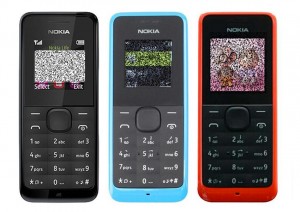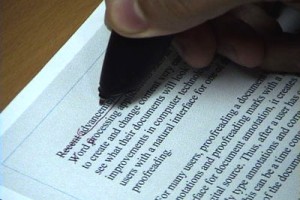Physical Interfaces and Devices
Our research at HCIL on physical interfaces is concerned with the development of new physical interfaces which broaden the use of computers outside the standard computer environments. By changing the place where users and technology meet, we can make new work, play, living and learning experiences possible.
Animal Blocks

Our design team partnered with Neurosmith to design an animal version of MusicBlocks, an educational toy for young children. More »
CrossY: A Crossing Based Drawing Application

We introduce CrossY, a simple drawing application developed as a benchmark to demonstrate the feasibility of goal crossing as the basis for a graphical user interface. More »
Dual/Multi Display Electronic Readers
Existing electronic reading devices don’t adequately support the different types of reading people perform. We explored interface designs for a two-screen reading device that allows it to improve the reading experience. To perform our exploration we created a series of prototypes, ranging from low-fi paper to a fully-functioning electronic reading device with two detachable, motion-sensitive faces.
High-Precision Touchscreens: Museum Kiosks, Home Automation, and Touchscreen Keyboards

Between 1987 and 1991 HCIL worked on a series of touchscreen projects for museum kiosks, home automation, and text data entry. More »
Mobile Collaboration for Young Children

Mobile devices can support the learning experience as children create narratives in various contexts. Mobile device limitations can be overcome by bringing people and devices together. In addition, social interaction and collaboration are essential to the emotional and cognitive development of young children. More »
ModelCraft

With the availability of affordable new desktop fabrication techniques such as 3D printing and laser cutting, physical models are used increasingly often during the architectural and industrial design cycle. More »
PETS: A Personal Electronic Teller of Stories

These robotic animals enabled children to be storytellers. Now it is a commercial product from Anthrotronix called CosmoBot. More »
ProofRite

ProofRite is a word processor that allows users to print documents, annotate them with a digital pen, and have the strokes automatically incorporated back into their digital document. More »
Single Display Groupware / Multiple Input Devices
A Java toolkit to support several simultaneous users of a single computer at the same time. More »
StoryRooms

Children are able to build their own rooms to tell their own stories using mobile and embedded technologies. More »
Tangible Flags

Using Tangible Flags, children on field trips can easily collaborate to create and connect digital information to the real world, but also have the flexibility to explore independently. More »
Therapeutic Play with a Storytelling Robot

Using the PETS technologies for a more engaging physical therapy experience. This became the commercial product from Antrotronix. More »




